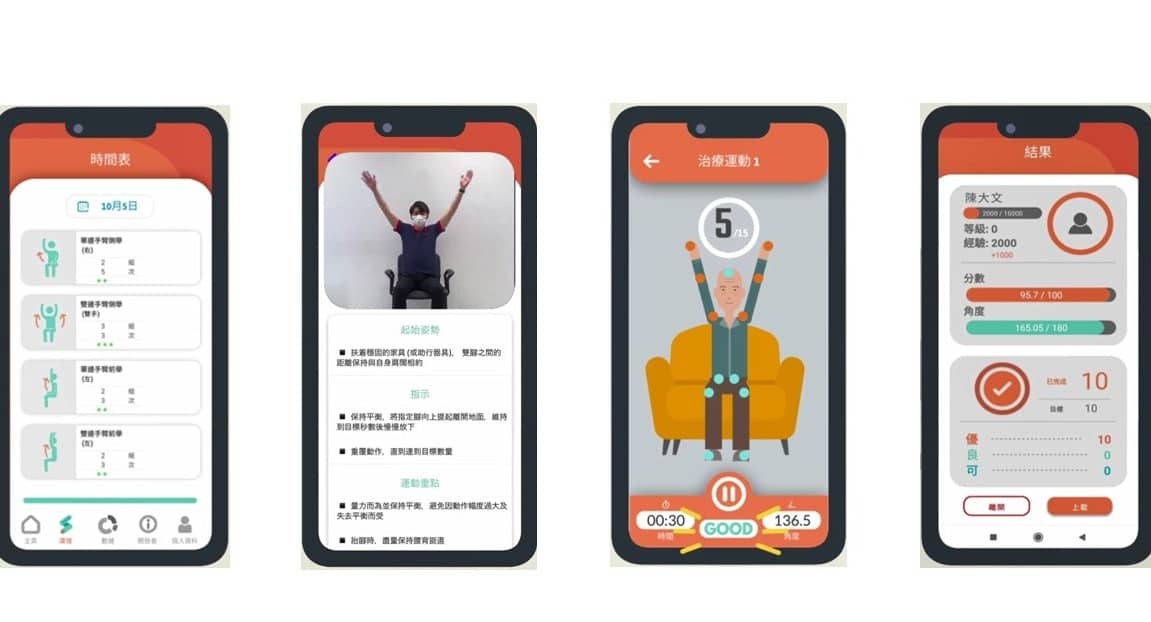Remote Physio and Occupational Therapy Services
KEY INFORMATION
TECHNOLOGY OVERVIEW
Timely and adequate rehabilitation is critical in facilitating post-stroke recovery. However, the organisation and delivery of rehabilitation are resource-demanding, and are only available in ~25% of stroke survivors in low-middle-income countries. Therefore, innovative solutions are urgently required to improve access to stroke rehabilitation services. Our team developed a platform to assist remote dissemination of physio- and occupational therapy services. Our platform enables post-stroke rehabilitation services to be delivered using consumer-grade devices (e.g., smartphones and tablet devices) and artificial intelligence technology, thereby breaking many physical and resource barriers to rehabilitation service access.
Our platform is designed for hospitals, rehabilitation centres and post-stroke service providers. The system consists of two interfaces – the therapist portal and patient application. Portal system enables remote prescription of exercises and monitor exercise performance and progress, whereas the patient application acts as a “smart therapist” in providing real-time instructions and feedback. The system addresses limitations faced by the conventional phone interview- and video conference style of telemedicine, which mainly relies on self-reporting and subjective recall. Using devices’ built-in camera and relevant Internet of Things (IoTs), we automated the evaluation process using algorithms with key features identified by professional therapists for providing “supervision” through real-time feedback.
TECHNOLOGY FEATURES & SPECIFICATIONS
The core technology utilizes artificial intelligence and computer vision. The bodily information is evaluated against experts’ criteria for providing real-time feedback to facilitate automated and “supervised” telerehabilitation.
Features:
- Easy to setup and use, enable user to undergo rehabilitation with no time and place restriction
- Real-time feedback
- Validated objective measurements and evaluation
- Can be run on consumer-grade smartphones/tablets, no extra device required
POTENTIAL APPLICATIONS
The system is suitable for use and applicataion in healthcare and residential care industry.
Further rehabilitation-relevant services are under development to cater a wider spectrum of neurological conditions, including speech and cognition.
Market Trends & Opportunities
Market – Elderly Health Centres, Elderly / Nursing Homes, Government, Social Welfare Departments or organizations, Individual for home use
Distribution -- Worldwide, particularly in low-to-middle income countries where physical and functional (e.g., difficulty ambulating from home to centre), social (e.g., inconvenience of patient and/or caregiver), and financial barriers (e.g., costs, opportunity costs during working hours, and duration) are evident.
Features:
- Easy to setup and use
- Close the gap in healthcare service using accessible and affordable technology
- Validated objective measurements and evaluation
- Customizable exercises and real-time feedback system
Low hardware requirement, runs on consumer-grade smartphones/tablets, no extra device required
Unique Value Proposition
The current “State-of-the-Art” of remote- and telerehabilitation adopted worldwide during the COVID-19 pandemic relies largely on the use of phone interviews and video conferences, which face limitations including labor-intense, subjective, and prone to recall bias. Our technology holds its UVP by addressing these limitations through automated and objective measurements via artificial intelligence and information captured using embedded cameras and other Internet of Things. It enables minimal human resources for monitoring and managing safe home-based rehabilitation.


